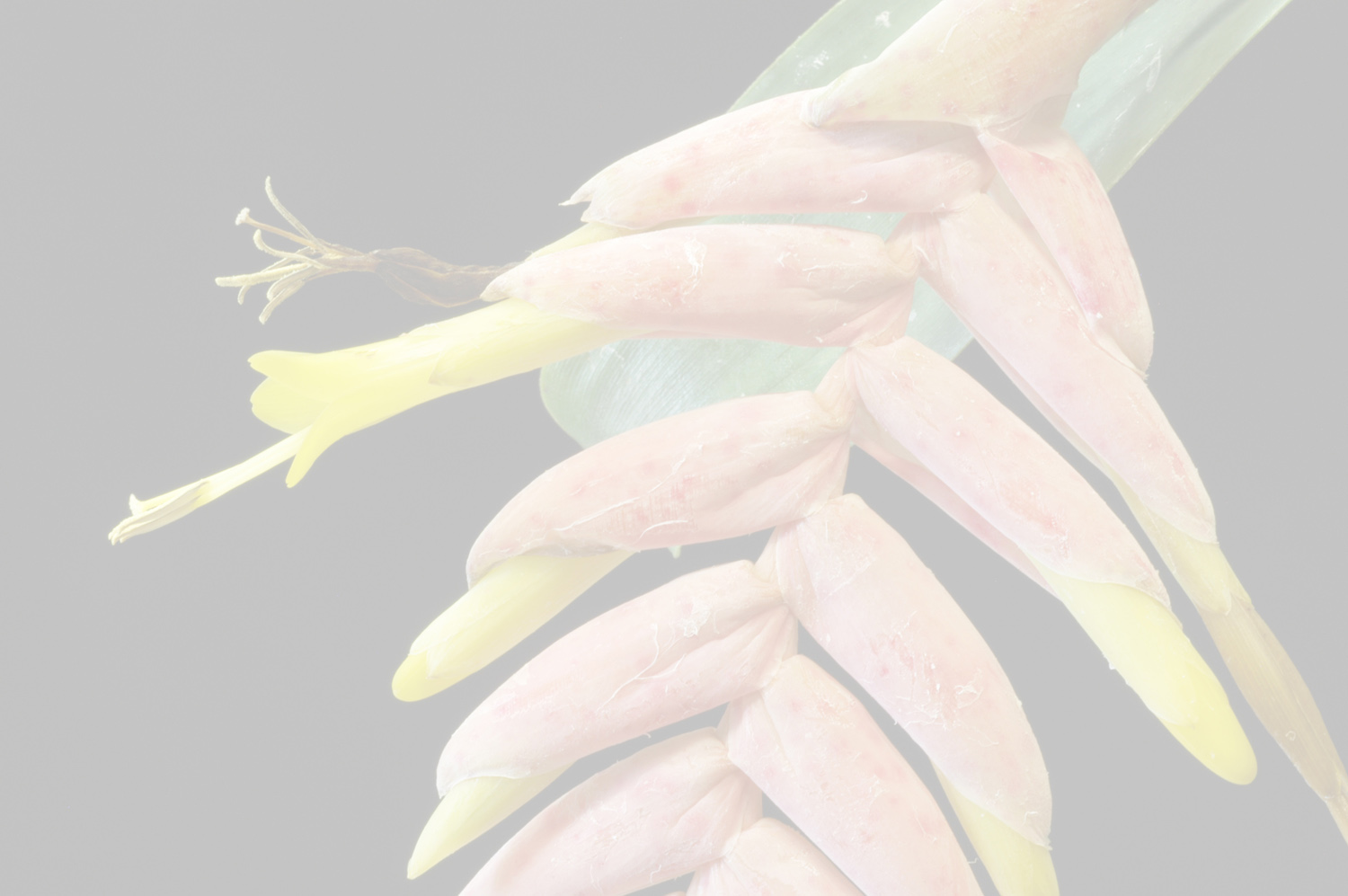Vriesea morrenii Wawra
Literature references:
*move your mouse pointer over the page numbers to see comment
Comments:
- By Derek Butcher 2/2007
AND another thing do not confuse this name with the hybrid 'Morreniana'!
In the late 1980's Len Colgan imported a Tillandsia segregata from Bello's nursery in Brazil for Peter Tristram and which served its quarantine sentence at Peter's place. It survived and a few years later Len got an offset to grow on. However, Len decided it would not be easy to grow and the plant went up to northern Queensland never to be heard of again.
This information was not known to me when in August 2000 we acquired a Vriesea morrenii from Genny Vauhkonen. Subsequently we have found out that she got her plant from Peter Tristram. How did it get a name change? I can only assume it was because Peter Tristram saw that in 1994 DeRebus I page 29 the succinct note that Tillandsia segregata is now Vriesea morrenii according to an unpublished Supplement to Flora Neotropica. If you look at Flora Neotropica 1977 page 1141 under Vriesea morrenii you find the note "Edmundo Pereira in Rio de Janeiro has living material with wholly naked petals but otherwise indistinguishable from Vriesea morrenii. For the present I am regarding this as a reversion to a more primitive state." You will note that although Smith was aware that Pereira had published in 1971 the name Tillandsia segregata was not mentioned! We now know the reason for such statement. More on this later.
Genny commented, "It doesn't flower often!" If they had problems in this regard near Brisbane where it is sunny everyday and raining everynight, what chance did we have in Adelaide where it is sunny every day and dry everynight. But in Feb. 2007 (7 years later!) our plant decided to flower. It seems to be a plant that produces large vigorous offsets before flowering. When you have a plant that is 1m in diam and flowers to nearly 2m high you need space. Admittedly while you wait for flowering you do have a lovely green leafy plant with dark lines and no prickles on the leaves.
So I was blithely assuming I had a Vriesea morrenii to butcher. Ever since I retired, I have been on the search for plant descriptions not in Flora Neotropica. This search increased apace when I got access to the Internet and could get detail from little-known published papers. I now have descriptions of virtually all the Bromeliaceae. In the case of T. segregata it took a fair bit of fossicking to find that Pereira had described this new species in Rodriguesia in 1971 and thanks to Dr. Walter Till I got hold of a photocopy. Translation of the Latin and the Portuguese helped me understand what was going on.
We know that Lyman Smith split Vriesea and Tillandsia at genus level purely on the basis of petal appendages and yet in this instance he was prepared to forget his own philosophy ! Luckily these days emphasis is less strong on the importance of petal appendages although it is said the presence or absence of these could be used to segregate at species level! As such I believe that we should have T. segregata resurrected perhaps as Vriesea segregata but leave it up to the Brazilian taxonomists. After all, Pereira in 1971 wrote strongly about the casual decision of Lyman Smith to consider his plant to be a Vriesea! As is natural, the Brazilians would follow a Brazilian taxonomist so this is why Len Colgan got his plant as Tillandsia segregata!
A copy of a drawing of T. segregata is shown here. The plant had been collected in the Organ Mountains in Rio de Janeiro. The description of T. segregata says yellow petals, whereas everything else was a variation on green so it must stand out! Alas, we missed the first flowerings with our plant because the petals were dark green. There are a few discrepancies between our plant and the description but nothing to suggest it was another described species. AND I could not find any petal appendages. So there are at least two plants around with this attribute - Pereira 10674 and ours!
Let us now have a quick look at Vriesea morrenii which was named in 1880. Alas the herbarium specimen has been lost. In 1889 Baker treated it as Tillandsia Morreni with no mention of petal appendages. In 1935 Mez records Vriesea Morrenii with two appendages and by Flora Neotropica 1977 these appendages had become ovate! I am currently trying to find the protologue in 1880!! We know that Lyman Smith collected V. morrenii in 1952 in the Organ Mountains so the shape of the petal appendages could have come from here. The description is otherwise very similar to that of T. segregata except that it mentions irregular transverse dark green lines whereas Pereira says T. segregata has longitudinal folds. Our plant has both attributes.
This plant will continue to be grown in Australia if only as a non-prickly foliage plant but don't be disappointed with the greenness of the inflorescence! Reports around Australia from the SAME clone reveal an interesting phenomen about the petal colour. We know that in Adelaide they are totally green but I have proof that in Melbourne at least one flower had totally yellow petals whereas in northern NSW they are yellow with green tips. Dare I ask that if you are growing a plant of this name from a different source you check for little appendages at the bottom of the petals to see if you have a TRUE Vriesea morrenii!

